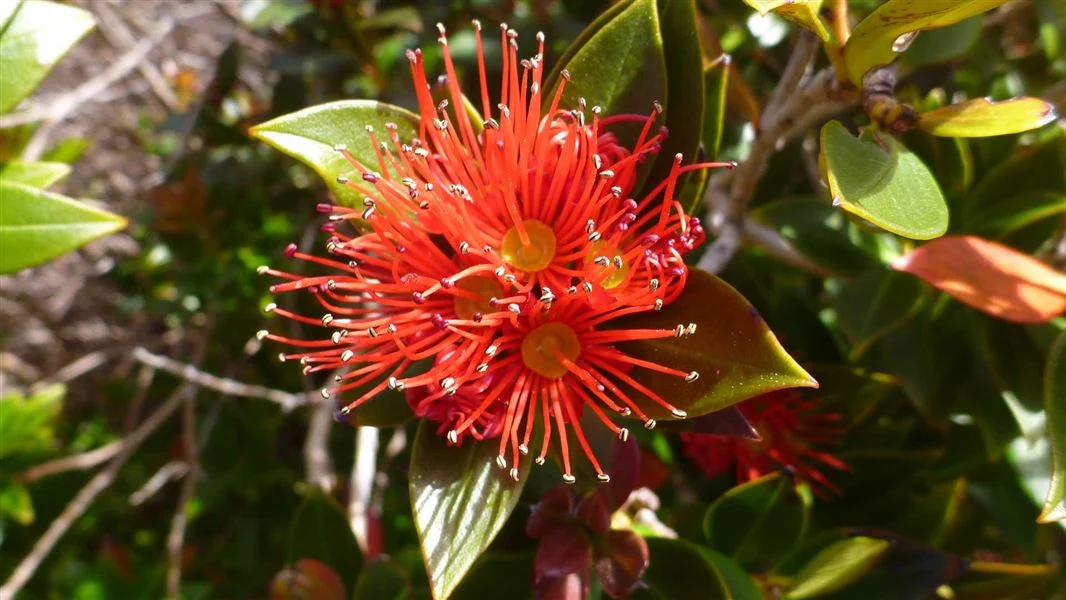Why some treasured species might actually be harming the ecosystem
- Find-A-Pest

- Dec 14, 2023
- 3 min read
You may have heard the phrase 'right tree, right place' but did you know that there are even native plants and trees that this can relate to, including one that is often refered to as New Zealand's Christmas Tree.
The pōhutukawa tree is a member of the myrtle family, known for those beautiful flowers of whero (red). In Aotearoa, pōhutukawa growing outside of their natural range can threaten other endemic plant communities. Conservation projects interested in local endemic biodiversity, including Zealandia in Pōneke/Wellington, remove seedlings and adult trees, often favouring locally significant relatives, like northern rātā.
Native range:
Pōhutukawa originate in coastal and lake regions of Te Ika-a-Māui/North Island, north of Ngāmotu/New Plymouth and Kihipene/Gisborne.
Spread in Aotearoa:
Pōhutukawa seed capsules open in late summer and autumn. The masses of fine seeds are naturally spread by wind and water, with seedlings even taking root on cliff faces. In ideal conditions, the seedlings can shoot up 30cm a year.
The beauty and cultural significance of pōhutukawa has made it a popular choice for ornamental planting. If agapanthus has taught us anything, it’s that we haven’t always given enough thought to the species we choose for our parks, gardens and avenues . . .
Pōhutukawa ‘pestiness’:
Pōhutukawa, a pest?
How can it be that our celebrated rākau rangatira (chiefly tree) could be considered an environmental threat?
The answer lies in the frequency, and the specialness, of our endemic communities.
Rather than one sprawling monoculture, our island nation is made up of many distinct and interconnected biological communities, from rock pool to rainforest. Many of these ecosystems are unique, each supporting plant and animal species that are precisely adapted to the local climate, to the available resources, even the pH levels of the soil. Some species are so dependent on these conditions that they can survive nowhere else.
When unfamiliar species drop into an ecosystem – like an avenue of pōhutukawa, for instance – that delicate balance can be upended, and rare species can be further suppressed.

What’s at risk:
Out of place pōhutukawa can threaten coastal plant communities: Not only other plants, but the associated invertebrate and microorganism communities, including fungi, lichen, and bacteria.
Action stations! Right plant, right place!
In te ao Māori (as investigated by Alan King-Hunt), “pestiness” is recognised as a state that organisms can fall under when they’re brought out of balance, sometimes by natural occurrences, but more often by human interference. Rather than permanently labelled as a pest, the species incursion is treated as an issue that can be investigated and appropriately addressed.
If you live south of Ngāmotu / New Plymouth and Kihipene / Gisborne, and would like to enhance your restoration or garden project with the lush foliage and flowers of a pōhutukawa, think twice before you risk the delicate balance of your local ecosystems. Try other beautiful similar natives like Rātā or bottlebrush
Aotearoa boasts a wealth of unique botanicals, including lesser known relatives of pōhutukawa you can plant instead. Depending on your location, consider white rātā (Metrosideros perforata), scarlet rātā vine (Metrosideros fulgens), or northern rātā (Metrosideros robusta). There’s lots to investigate, and the rewards can be numerous!
Good practice when protecting te taiao (the natural world) is nuanced! Download Find-a-Pest, and report potential sightings of pests to help keep Aotearoa’s coasts thriving.
More information:
Find out more about telling the difference between Pōhutukawa, Northern Rata and Southern Rata.
Article written by Kerry Donovan-Brown for Find-A-Pest







Comments